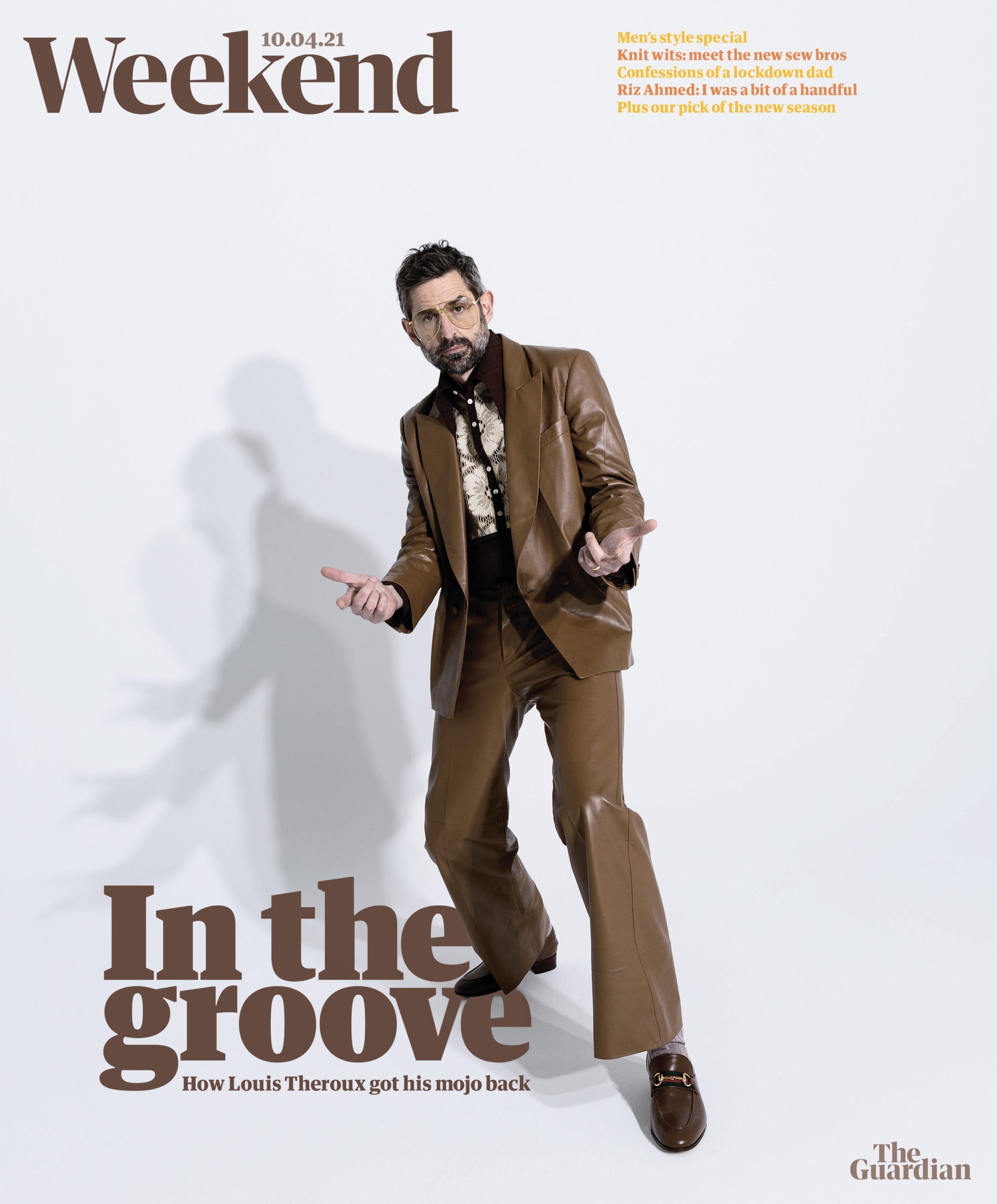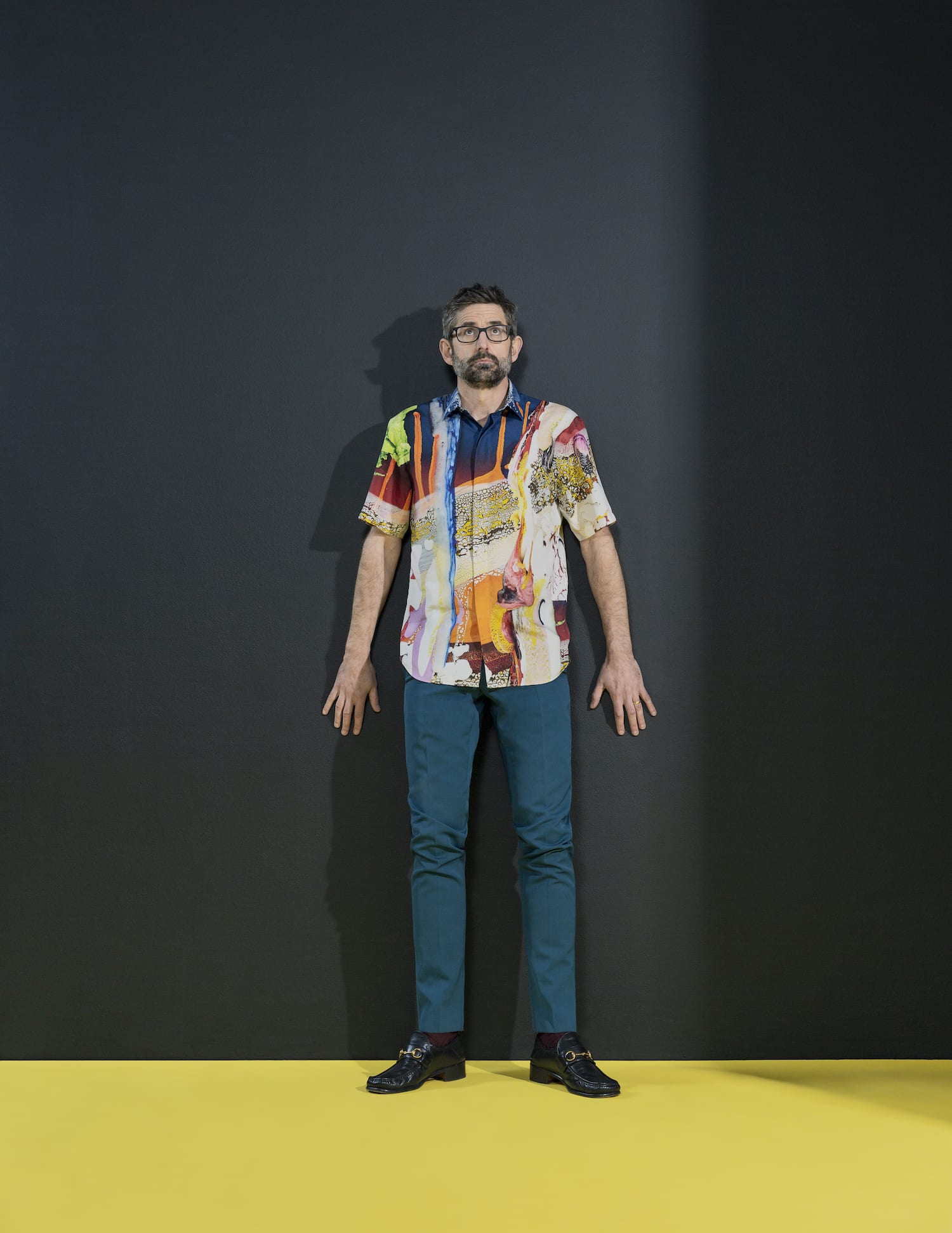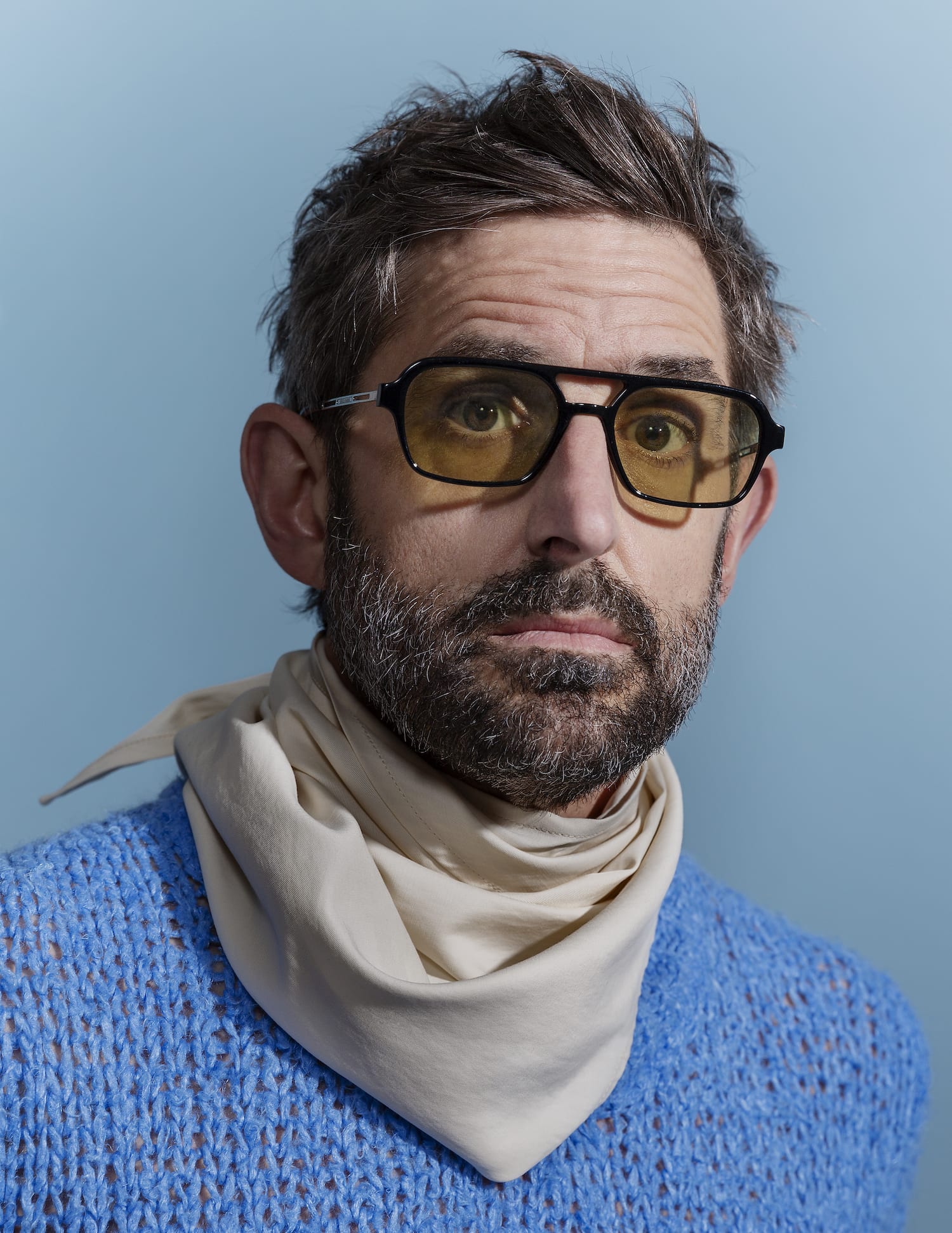Rocking a brown leather Gucci suit, it would seem that Theroux stole the hearts of every demographic in the nation. David Vintiner unpacks the process behind the shoot
David Vintiner has been following Louis Theroux’s career since the late-90s, when he first started producing TV documentaries. “His subject matter has probably had quite an influence on my photography actually – stories on the fringes of society,” Vintiner reflects “He’s a bit more extreme than I am, but the basic element is the same. It’s those gaps in society that are interesting to me.”
Most recently, Vintiner has been working on a long-term project about the transhumanist movement, which believes that technology can and should be used to to augment our bodies and our minds. Alongside personal projects, Vintiner is an editorial photographer, and having worked with the likes of Nick Cave, Phoebe Waller-Bridge, Willem Dafoe, Olivia Colman, and Buzz Aldrin, he is no stranger to photographing people he admires. “There is a moment when they walk in the room, and you’re in awe,” he says, “but then it’s back to work. Most of the time, I’m thinking about the photography, and what sort of images I want to make; that’s my focus”.
Last weekend, when The Guardian Weekend unveiled its cover story, the internet blew up. Rocking a brown leather Gucci suit, it seems Louis Theroux stole the hearts of almost every demographic in the nation. “Everybody seems to absolutely idolise him,” says Vintiner. “I can’t think of many other people that have that draw across such an age range. He’s a journalist – he’s not a pop star or film star or anything. It’s quite remarkable.”
Because the magazine is weekly, deadlines can be tight. Vintiner was commissioned a week before the shoot, which is normal for a weekly, he explains. In the lead up, Vintiner tried to research as much as possible. “I wanted to play with the ideas of shadows, and him coming in and out of the shadows as a metaphor for the way he operates,” he says. “I did have these loose ideas, but then I also try to leave things free on set; a bit of room to play and let things unfold naturally.”
Unlike Quil Lemons, who was given an entire day to shoot Billie Eilish for Vanity Fair, Vintiner was only allocated three hours to shoot. And on the day, the time was cut down to just one hour. “You have to have 360 vision,” he says, emphasising the importance of working to time. “I have to be aware of how they look, the lighting, whether it’s looking on screen like the ideas in my head. The studio time may be up in an hour, or my sitter might have another meeting or a TV appearance to get to.”
“Putting those clothes on really transformed him. As soon as he got that suit on he stopped with all the Louis Theroux-isms. It gave him an excuse to try other movements”
For someone who, as the accompanying article surprisingly reveals, cares a lot about what other people think, Theroux was comfortable in front of the lens. “There were times when he was giving me very studied poses – tried and tested Louis Theroux poses,” says Vintiner. Peering over the top of the glasses, or hand on chin, with a slight bemused expression. “When you’re shooting a portrait, you’re trying to steer people away from that, and get those in-between moments.”
The turning point was down to the Gucci suit. Initially, the team thought it may be “too much”, says Vintiner, but Theroux was up for it. Vintiner caught a glance of him taking selfies to send to his wife, who (spoiler alert) later disclosed that she hated it. “Putting those clothes on really transformed him… As soon as he got that suit on he stopped with all the Louis Theroux-isms… It gave him an excuse to try other movements,” says Vintiner. “It was interesting to play with that, and see how the clothing changed his behavior.”
Those familiar with Vintiner’s work will notice similarities to portraits from his personal projects, which he sees as “closely aligned” to his editorial work. “Obviously, there’s a client’s brief to answer when you’re shooting an editorial. But I’m always trying to answer my brief on it as well, and shoot in a personal way,” he says.
After shooting editorial commissions for 20 years, for publications like GQ, New York Times Magazine and Esquire, it may be surprising to learn that the work hasn’t gotten any easier for Vintiner. “I put more pressure on myself now than I did when I was younger,” he says. “It’s easy to just keep producing the same work, or going back to tried-and-tested techniques… You want to move forwards and move things on.”
Above all, it is the stories that have kept Vintiner so engaged with his work. “Whether it’s a celebrity, or a scientist who’s undertaking incredible research, when shooting editorially, you’re always sent out to uncover a story of some description,” he says. Editorial photography is also not as prescribed as a commercial advertising campaign. “For editorial, you can prepare, but you still don’t know what’s going to happen,” says Vintiner. “You walk into a studio and you have to think on your feet. And that’s endlessly exciting.”



